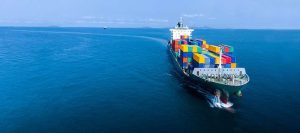Exploring the intricate waters of international shipping can be a challenging task, especially when considering the challenges that sea freight in Singapore encounters. From regulatory hurdles to port congestion issues, the journey can be filled with complexities. However, by investigating innovative solutions and fostering collaboration within the maritime community, a path to overcoming these obstacles begins to emerge. Stay tuned to discover how industry leaders are strategizing to enhance efficiency and guarantee smoother sailing in the domain of sea freight operations.

Regulatory Compliance in Singapore
Understanding regulatory compliance in Singapore requires a thorough grasp of the intricate legal framework governing international shipping operations. Singapore’s Maritime and Port Authority (MPA) enforces stringent regulations to guarantee safety, security, and environmental protection. Familiarize yourself with key requirements such as vessel inspections, crew certifications, and cargo documentation. Stay updated on the latest changes to avoid penalties and maintain smooth sailing in Singapore’s waters.
Infrastructure and Port Congestion
Mastering Singapore’s regulatory compliance successfully, you must now turn your attention to the challenges posed by infrastructure limitations and port congestion in the region. The rapid growth of trade volumes has strained the existing infrastructure, leading to port congestion at peak times. Delays in vessel turnaround times and container handling can impact overall supply chain efficiency. Addressing these issues requires proactive planning and collaboration between stakeholders to optimize port operations.
Supply Chain Optimization Strategies
To enhance supply chain efficiency amidst infrastructure limitations and port congestion in Singapore, consider implementing data-driven logistics strategies. Utilize real-time tracking systems, predictive analytics, and automated inventory management tools to streamline processes. Implementing just-in-time inventory practices and optimizing transportation routes can help reduce delays and costs. By leveraging technology and data analytics, you can enhance visibility, minimize disruptions, and improve overall supply chain performance.
Technological Innovations in Sea Freight
Embracing cutting-edge technologies has revolutionized the landscape of sea freight operations, enhancing efficiency and reliability in international shipping. From advanced tracking systems to automated cargo handling, technology has streamlined processes, reduced human errors, and improved overall customer satisfaction. Real-time monitoring, data analytics, and blockchain integration have become instrumental in optimizing supply chains, minimizing delays, and ensuring seamless communication across the maritime industry.
